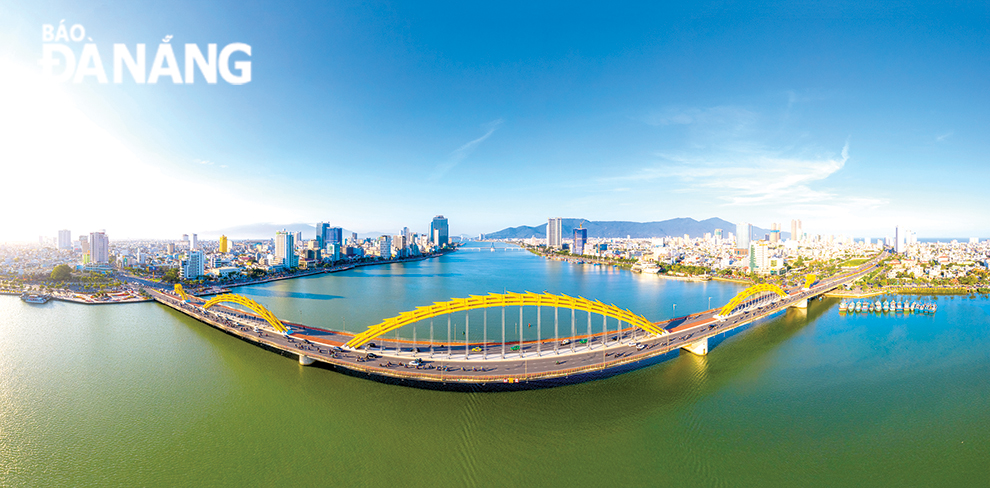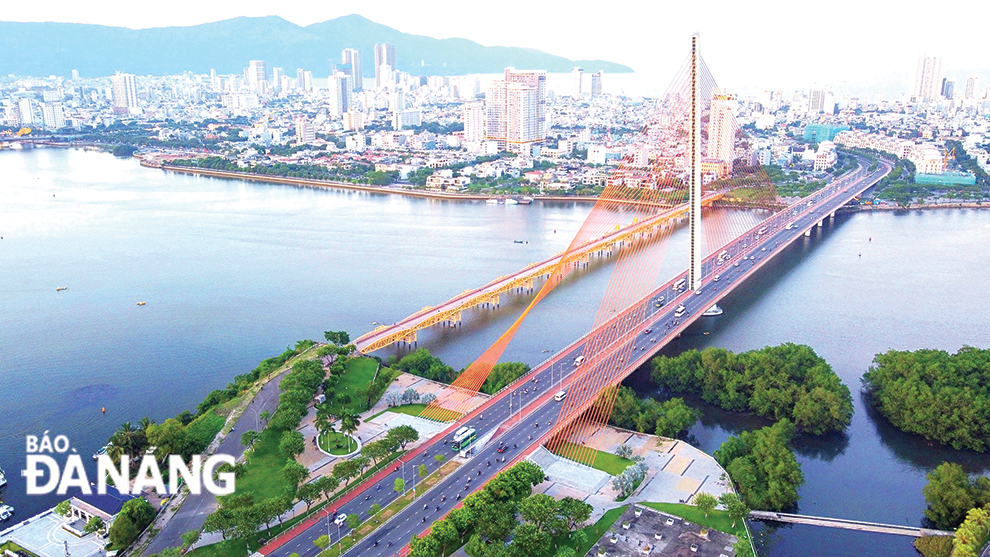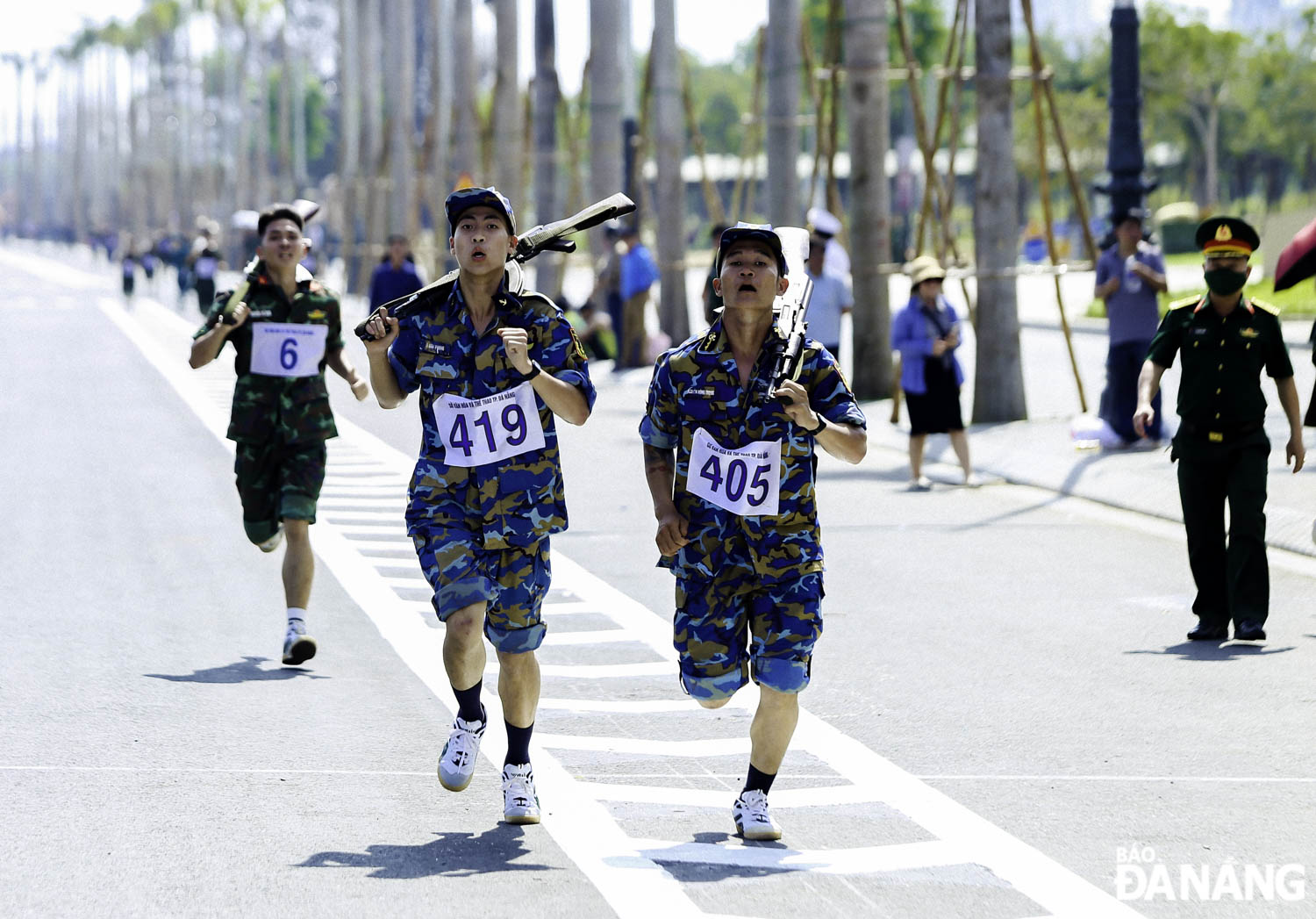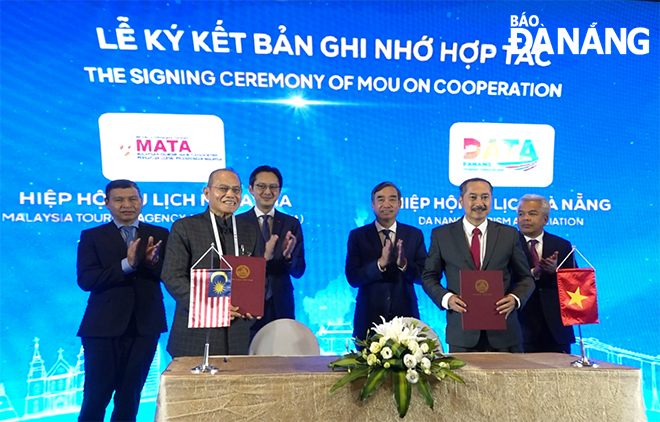Da Nang- city of bridges
Da Nang is not only famous for its beautiful natural landscape and friendly, hospitable people, but is also known as ‘the city of bridges’. This title is not only due to the number of bridges but also the uniqueness of these structures. Each bridge has become a symbol of each period of construction and development of a young, dynamic city over the past 50 years.
 |
| The Dragon Bridge represents the desire for strong development and symbolizes the new architectural art of Da Nang. Photo: H.LE |
Unique bridges on the Han River
The poetic Han River begins at the junction of the rivers between Cam Le, Hai Chau, Ngu Hanh Son districts. It is the confluence of Cam Le River and Vinh Dien River flowing into Da Nang Bay. Up to now, the Han River is only about 7.7km long but has many bridges crossing it. These bridges are not only important for transportation but also architectural highlights of the city with unique features that are rarely found anywhere else in Viet Nam.
The Nguyen Van Troi Bridge, the first of its kind across the Han River, was built in 1960. The bridge consists of 14 Poni steel truss spans with a total length of 513.8m, a width of 10.5m, a carriageway of 8.5m and no sidewalk for pedestrians. Since 2013, the bridge has stopped operating due to its deterioration and inability to meet the increasing traffic density.
According to the original plan, when the new Tran Thi Ly Bridge was completed, Nguyen Van Troi Bridge would dismantled; however, the city’s administration decided to keep it as a pedestrian bridge, and at the same time, arranged suitable landscapes, creating a resting place for people and tourists to relax and admire the beauty of the city. The Nguyen Van Troi Bridge currently no longer has a traffic function, instead it is a unique tourist bridge and a "souvenir" of the city.
Named after the river and a symbol of the city, work started on the Han River Bridge in 1997 and it was completed on March 29, 2000. This was the first swing bridge in Viet Nam at that time, designed and built by Vietnamese engineers. The Han River Bridge is 444.2m long, 13.5m wide with a total of 11 spans, including two cable-stayed spans. The bridge connects two main roads of Da Nang, Le Duan Street on the western bank and Pham Van Dong Street on the eastern bank of the Han Rivfer.
The most prominent feature of the Han River Bridge is that the middle part of the bridge can rotate 90 degrees around an axis along the river flow for large ships to pass through. Not only does it arouse the economic potential of a large area to the east of the city, the bridge is also a unique cultural symbol, a source of pride for Da Nang people. It can be said that this is a bridge with the mission of ‘paving the way’ for the city to build other unique bridges.
At that time, there were already the Han River Bridge, Nguyen Van Troi Bridge and Tran Thi Ly Bridge (old) on the Han River, but all three had limited load capacity. Started in February 2002 and inaugurated on February 19, 2004, the Tien Son Bridge was meant to be the bridge that paved the way for Da Nang to boost integration and growth. The bridge is 529.8m long, 25.05m wide with 4 lanes and a pedestrian walkway, connecting Ngu Hanh Son and Hai Chau districts. Up to now, the Tien Son Bridge is considered to be the main freight bridge across the Han River, an important connection point to help the Da Nang seaport become bustling.
Next, on the poetic Han River, the Thuan Phuoc Bridge officially opened to traffic on July 19, 2009. The bridge has a total length of 1,855m, a bridge surface of 18m wide, planned for 4 lanes; spanning the last section of the Han River, located between Hai Chau and Son Tra districts, especially near the Tien Sa port in Da Nang Bay. The bridge was delicately designed, with a structure using modern construction technology applied in the world at that time, ensuring aesthetics and safety with the tireless efforts made by the construction team.
In 2013, the ‘Rong’ (Dragon) Bridge and the Tran Thi Ly Bridge (new) were inaugurated and put into operation at the same time, demonstrating a city that is constantly making breakthroughs in building new things towards sustainable development.
The construction of the Dragon Bridge began on July 19, 2009 and it opened to traffic on March 29, 2013, on the occasion of the 38th anniversary of the city's liberation. The bridge has 6 lanes with a width of 37.5m, a length of up to 666m and 5 spans. In particular, on the median strip between the bridge is designed the shape of a golden dragon made of steel. The dragon's head has a mechanical-electrical system that can spray water and fire. The architecture of the bridge is shaped like a Ly Dynasty dragon stretching out to the sea, representing the desire for strong development and symbolising the new architectural art of Da Nang.
Meanwhile, work commenced on the new Tran Thi Ly Bridge on April 22, 2010 and reach completion on March 29, 2013. The bridge was originally a railway bridge during the French colonial period, located about 20m upstream from the Nguyen Van Troi Bridge. After 1975, the bridge was named Tran Thi Ly, the name of a Vietnamese heroine, and was upgraded to a road bridge. With a length of 731m and a width of 35.5m, the bridge is designed in the shape of a sail, divided into 12 spans, of which the cable-stayed span is 230m long.
The Tran Thi Ly Bridge is considered the most unique inclined cable-stayed bridge in Viet Nam. The bridge uses a 3-way cable-stayed system with inclined cable-stayed pillars creating a unique bridge shape combined with an inclined tower 145m above sea level. The overall shape of the bridge creates the image of a sail filled with wind from the Han River to the East Sea, carrying the aspirations of the people of Da Nang.
 |
| A scene of the Tran Thi Ly Bridge and the Nguyen Van Troi Pedestrian Bridge. Photo: TRAN TRUC |
For better connection of city parts
According to statistics, up to now, the city has 6 large bridges over 300m, 25 bridges under 300m, 15 canal bridges under 25m, 6 bridges with special structures. Along with the development of the city, bridges have been built one after another with the aim of creating favourable conditions for people’s travel, connecting trade and developing lands. Among them, it is necessary to mention bridges across Cam Le River, the southwest area of the city. The Cam Le Bridge was built in 2001, with a length of 399m, 14.5m wide to connect National Highway 1A and National Highway 14B, opening up the development of the southern part of the city.
Also on this river, the Hoa Xuan Bridge was put into operation in 2010. Next, the Nguyen Tri Phuong Bridge was inaugurated on April 30, 2013, spanning Cam Le River, connecting Cam Le and Ngu Hanh Son Districts. Meanwhile, the Khue Dong Bridge is located on Vo Chi Cong Street, spanning Do Toa River (Cai River), between Cam Le and Ngu Hanh Son districts. Construction started in May 2011 and completed on April 30, 2013. This project, together with the Nguyen Tri Phuong Bridge, helps the city expand its urban space to the southeast.
The Co Co River, flowing through the city (Ngu Hanh Son District), features the Co Co and Bai Dai bridges. The Bai Dai Bridge (old name is Co Co Bridge) was inaugurated on May 19, 2014, with a length of 90m and a width of 19m. About 1km away from Bai Dai Bridge is the Co Co Bridge (new), which was inaugurated on October 30, 2021, with a length of 113.8m and a width of 27m, with 3 spans designed with a reinforced concrete arch frame structure.
In Hoa Vang District, a series of bridges have been put into use such as the Song Yen Bridge in both Hoa Tien and Hoa Phong communes, the Ta Lang - Gian Bi bridge (Hoa Bac Commune), Pho Nam Bridge (Hoa Bac Commune), Dieu Phong Bridge (Hoa Nhon and Hoa Phu communes), Truong Dinh Bridge (Hoa Lien Commune), Giang Bridge (Hoa Nhon Commune) ... have helped complete the traffic system, creating connections and smooth travel between residential areas with the commune and district centres and neighbouring areas. For example, the Pho Nam cable-stayed suspension bridge, Hoa Bac Commune opened to traffic on September 2, 2002, with a length of 151.4m and a width of 7.5m.
The bridge put into use has fulfilled the dream of thousands of people living on both banks of the Cu De River. Each bridge in this land was built in turn, opening up favourable opportunities for the residential area in all aspects; connecting the mountainous, midland and delta regions to create a sustainable development for Hoa Vang District. On historic days of March, the Quang Da Bridge spanning over the Yen River was completed and put into use over - a symbol of the close relationship between Da Nang and neighbouring Quang Nam Province.
In the 50-year journey of construction and development, besides the river bridges, many overpass bridges were created with the mission of being associated with the development and expansion of the urban area to the southeast and southwest of the city. The existence of those bridges along with the breakthrough development of infrastructure has made the urban face of Da Nang increasingly spacious and modern.
The Hoa Cam Overpass was put into operation in late 2004. The overpass that has a width of 28m, 6 spans with 6 lanes, 2 lanes for pedestrians, has contributed to reducing traffic congestion and accidents, connecting the southwestern area of the city.
Another modern project is the Hue intersection overpass, which was inaugurated on March 29, 2015. As the largest overpass in the country located on National Highway 1A - the gateway to the city, the Hue intersection overpass is permanently built and has a complex design with a total length of more than 2.5km, the roundabout has a diameter of 150m. The project is a new architectural highlight for Da Nang, expressing the harmony of “Earth” and “Heaven”.
According to the Da Nang Department of Transport, over the years, the city has chosen to develop transport infrastructure as a breakthrough with key projects that have high requirements for both engineering and unique architecture, creating unique marks. All of these bridges are not simply works serving convenient traffic but are also highlights of landscape architecture, creating a modern and attractive space for the city.
In addition to being closely associated with human life, each bridge is also a historical witness that has accompanied the city since its inception. In addition to the function of connecting traffic, each has its own meaning and value and bears a strong mark of science, technology and culture. Up to now, the city has always actively invested in building infrastructure with many bridges becoming symbols, not only for the city but also attracting tourists to Viet Nam...
Reporting by TRAN TRUC - Translating by A.THU








